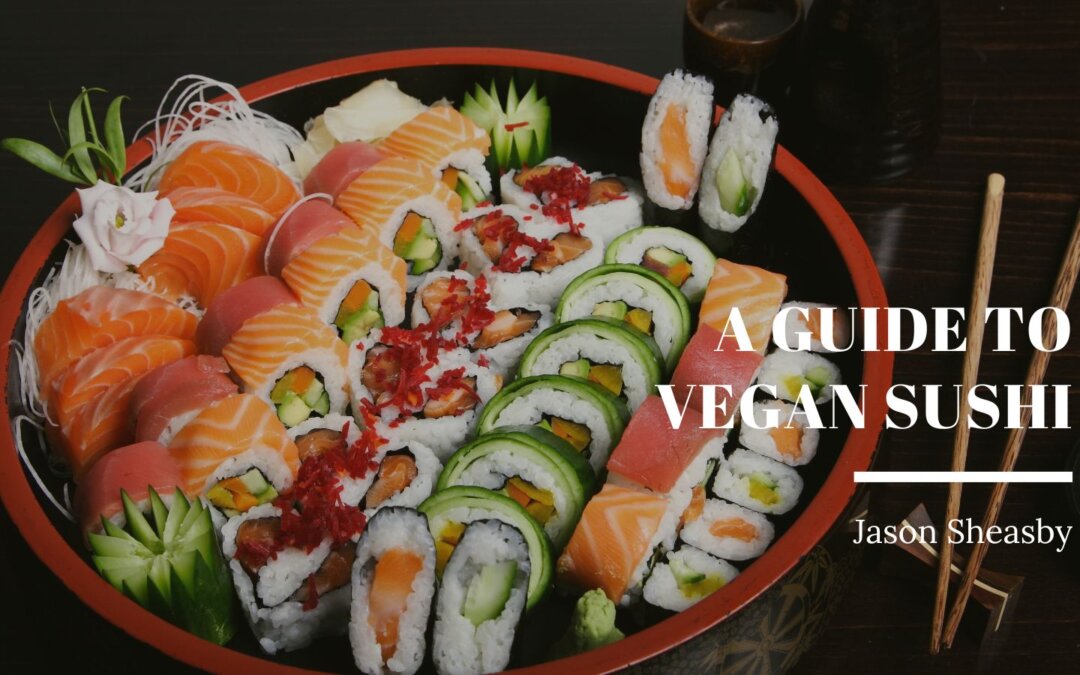Sushi, traditionally associated with fish and seafood, has evolved dramatically with the rise of veganism. Vegan sushi offers a delightful array of flavors and textures, proving that the art of sushi-making can be both plant-based and exquisite. Whether you’re a seasoned sushi lover looking to explore plant-based options or a vegan seeking new culinary adventures, vegan sushi presents delicious possibilities.
The history of sushi dates back to ancient Japan, evolving from a method of preserving fish in fermented rice to the culinary art form we know today. However, the essence of sushi – combining rice with other ingredients wrapped in nori – doesn’t inherently require animal products.
With the increasing popularity of veganism for health, ethical, and environmental reasons, sushi chefs and enthusiasts have begun to explore plant-based alternatives. Vegan sushi maintains the key elements of traditional sushi – the vinegar-seasoned rice and the careful balance of flavors and textures – while replacing fish with various vegetables, fruits, and other vegan ingredients.
This evolution in sushi-making caters to vegan diets and opens up a new realm of flavors and creativity. Vegan sushi showcases the versatility of vegetables, fruits, and grains, proving that the heart of sushi lies in its ability to blend different textures and tastes, regardless of the ingredients’ origins.
Key Ingredients and Preparations
The foundation of vegan sushi is sushi rice seasoned with rice vinegar, sugar, and salt. Preparing the perfect sushi rice is an art – it should be sticky enough to hold together but not overly mushy.
The next component is nori, the seaweed sheets that form the outer layer of rolls or the wrap for hand rolls. It adds a distinct oceanic flavor that’s key to the sushi experience.
For fillings, the variety is vast. Common choices include avocado for creaminess, cucumber for crunch, bell peppers for sweetness, and mushrooms, particularly shiitake, for a meaty texture. Pickled vegetables, like radish or carrot, add a tangy element. Tofu, either raw or smoked, provides protein, while tempeh can be used for a nuttier flavor.
Another exciting aspect of vegan sushi is the creative use of fruits. Mango adds sweetness and softness; fruit-based salsas can provide a refreshing twist.
Finally, condiments like soy sauce, wasabi, and pickled ginger complete the sushi experience, complementing and enhancing the flavors of the vegan ingredients.
Creative Variations
Vegan sushi thrives on creativity, allowing for endless variations. Traditional sushi rolls, like maki and uramaki, can be easily organized with plant-based fillings. For example, a vegan California roll might feature avocado, cucumber, and vegan crab meat made from konjac or jackfruit.
Nigiri, typically fish on a bed of rice, can be transformed using slices of marinated tofu, bell peppers, or even fruits like kiwi or persimmon. This variation requires delicacy in balancing the flavor and texture to mimic traditional nigiri.
Fusion rolls offer another avenue for creativity. These might include spiced tofu, vegan cream cheese, or plant-based tempura. Adding sauces such as spicy mayo made with vegan mayo or a sweet glaze can elevate these rolls.
Inari sushi, with rice stuffed in sweet tofu pockets, is naturally vegan and can be enhanced with various mix-ins like finely chopped vegetables or sesame seeds.
Finally, donburi-style sushi bowls are an excellent way to enjoy vegan sushi in a more casual, deconstructed form. These bowls can combine sushi rice with various toppings, such as marinated tofu, avocado, edamame, and pickled vegetables, creating a colorful and satisfying meal.
Health Benefits and Sustainability
Vegan sushi is not only delicious but also offers notable health benefits. It’s typically low in calories and high in vitamins, minerals, and fiber, thanks to the variety of vegetables and fruits used. The absence of fish eliminates concerns about mercury or other contaminants often associated with seafood.
Moreover, plant-based diets have been linked to lower risks of heart disease, hypertension, type 2 diabetes, and certain types of cancer.

